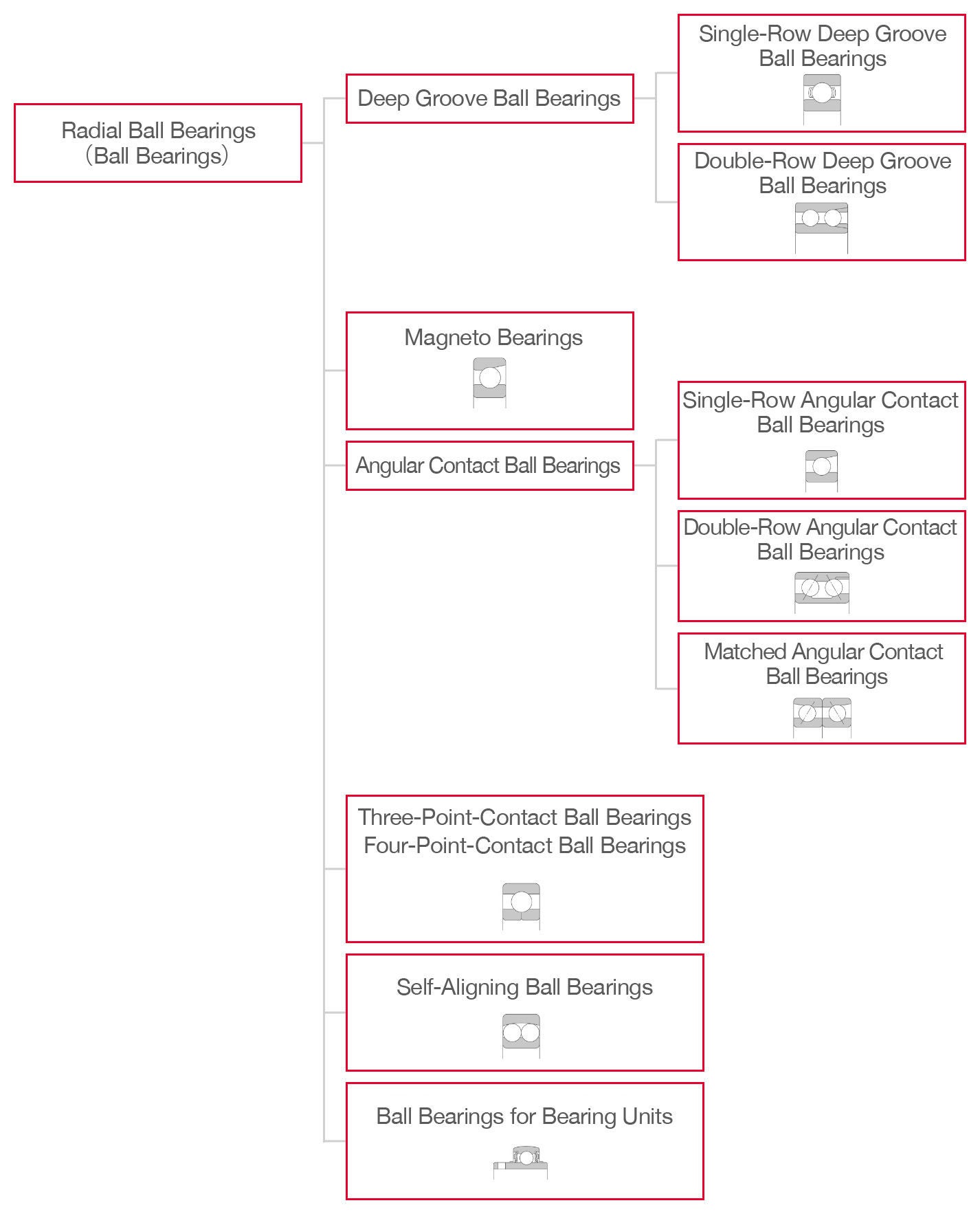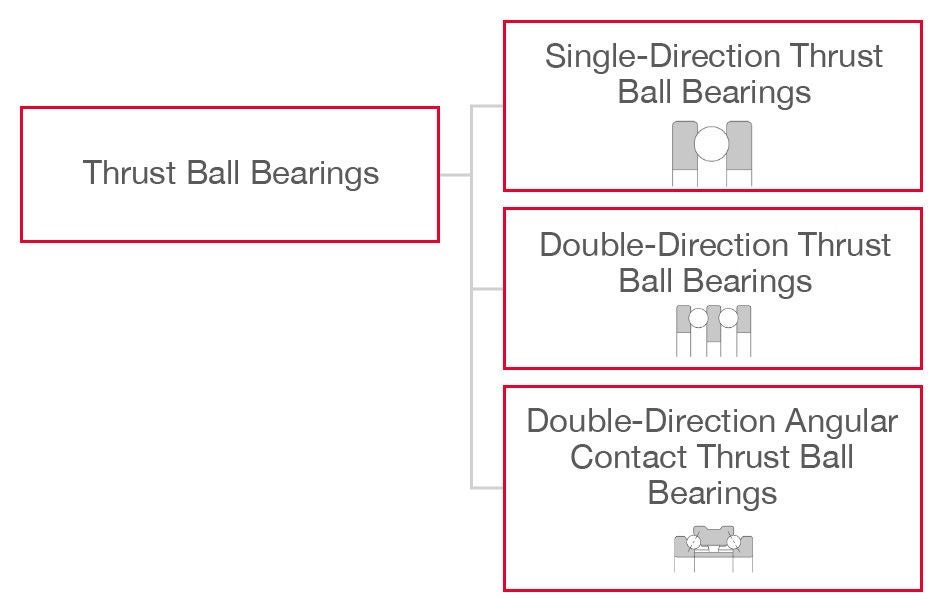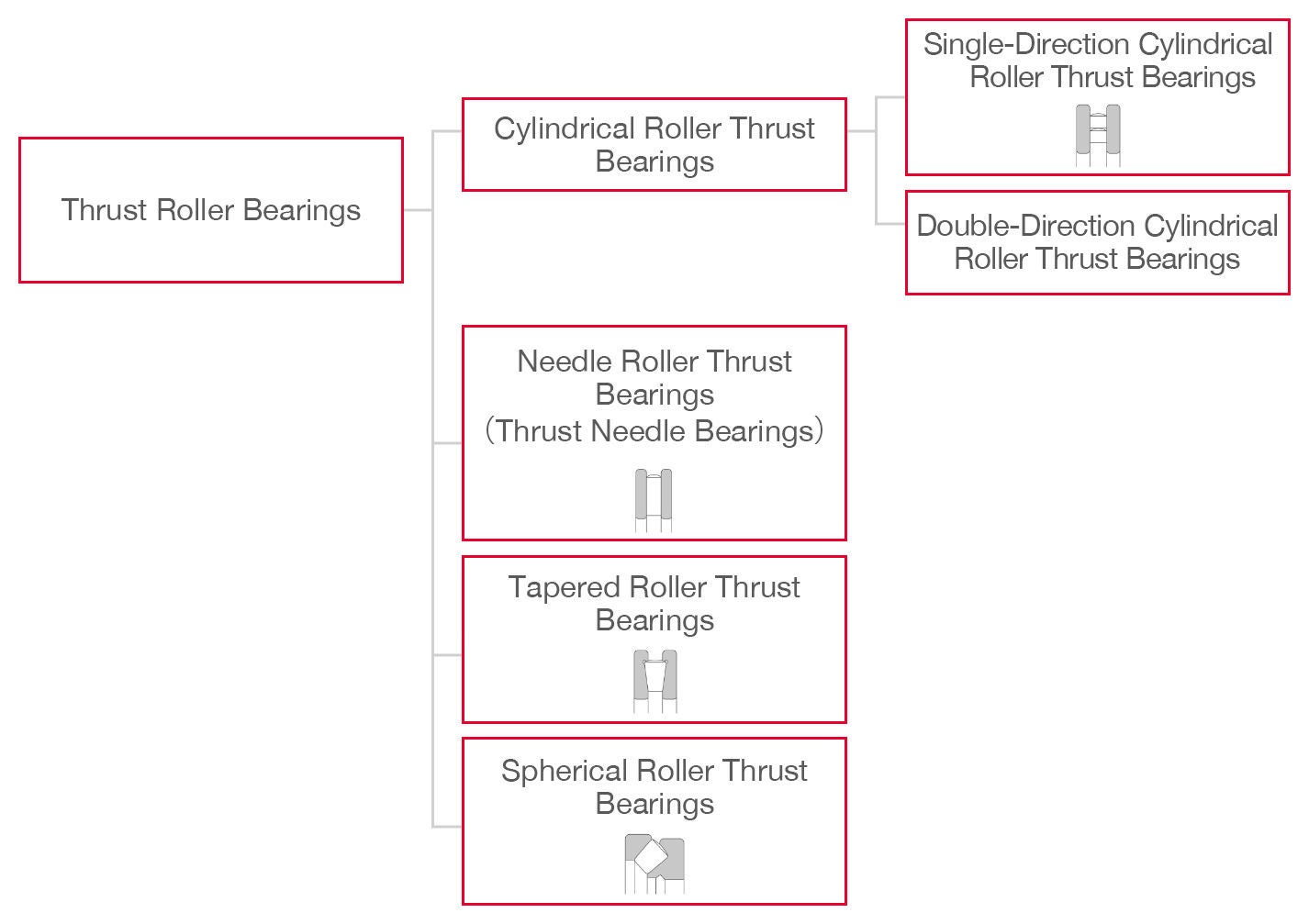1—Types of Rolling Bearings
Rolling bearings (hereinafter, “bearings”) are machine components that reduce friction. They are typically made up of a set of rings, rolling elements, and a cage. Bearings come in radial and thrust types, based on whether the main type of load they support is radial or axial.
They are categorized as ball bearings or roller bearings based on the rolling elements used within and can be further differentiated by their shape and application.
Types of Rolling Bearings
Rolling bearings are broadly classified by load and rotation conditions.
| Rolling Element | |||
|---|---|---|---|
| Balls | Rollers | ||
| Characteristics | Lower load capacity, good for high speeds | Higher load capacity, good for low speeds | |
| Load | Mainly radial loads (loads perpendicular to the shaft) | Radial ball bearings | Radial roller bearings |
| Mainly axial (thrust) loads (loads in the same direction as the shaft) | Thrust Ball Bearings | Thrust roller bearings | |
Radial Ball Bearings
In radial ball bearings, balls are used as the rolling elements for supporting primarily radial loads.

Radial Roller Bearings
In radial roller bearings, rollers are used for the rolling elements for supporting primarily radial loads. Most can also take some amount of axial (thrust) load.

Thrust Ball Bearings
Thrust ball bearings use balls for the rolling elements and can support only axial (thrust) loads.

Thrust Roller Bearings
Thrust roller bearings use rollers as the rolling elements and can support only axial (thrust) loads. With the exception of spherical roller thrust bearings, thrust bearings cannot take any radial loads.

